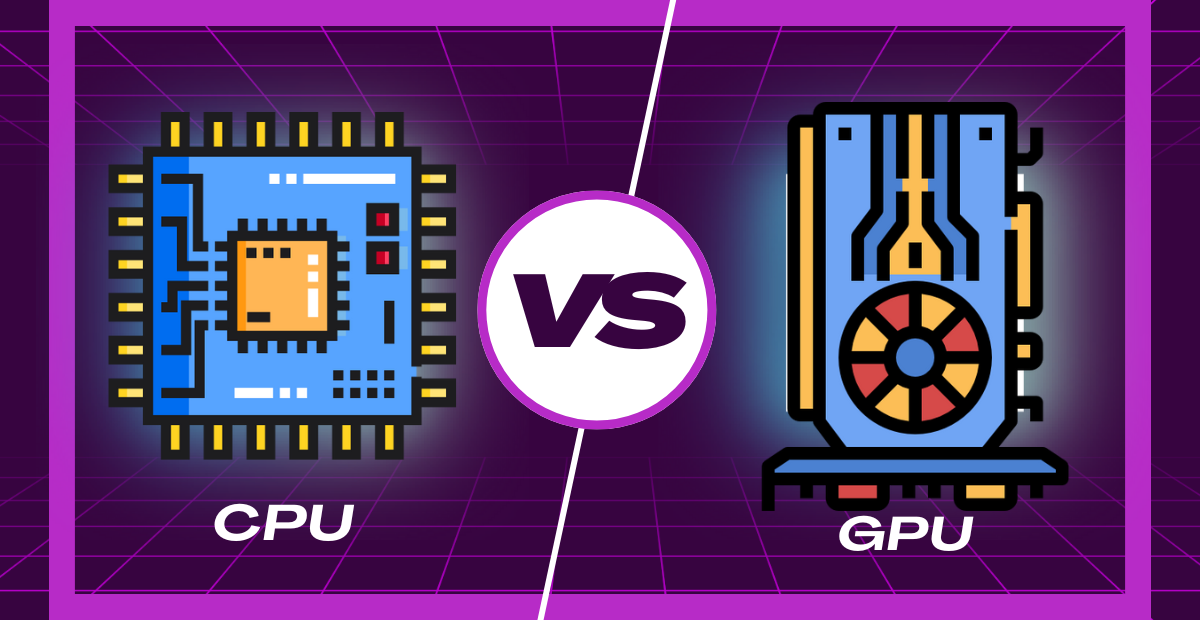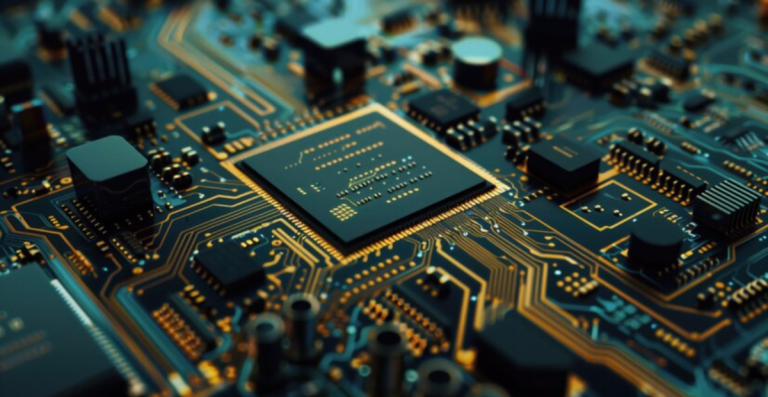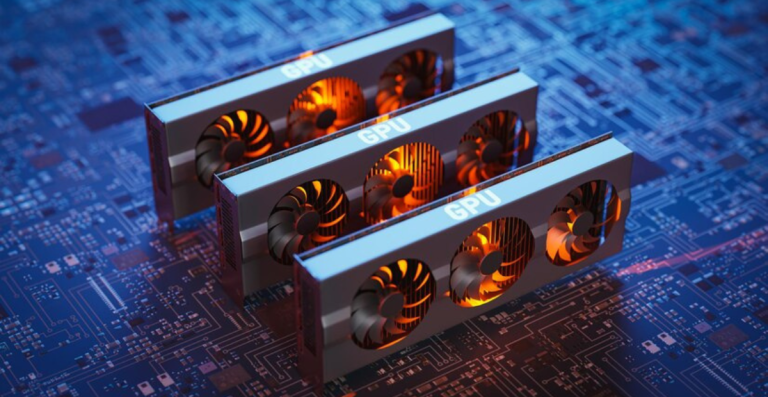CPU Intensive vs GPU Intensive Games: Bottleneck Analysis

Performance in gaming is frequently based on how well the hardware components of the system, mainly the CPU (central processing unit) and GPU (graphics processing unit), cooperate. Although many gamers concentrate on their systems’ graphical performance, it’s equally critical to comprehend how the CPU and GPU work together to produce the best possible gaming experience.
Let’s examine and know about CPU Intensive vs GPU Intensive Games, and how these two factors impact gameplay, and identify bottlenecks.
I. CPU and GPU Function in Gaming
Although they each have important functions in gaming, the CPU and GPU have different duties. While the GPU concentrates on creating images and visual effects, the CPU manages the game’s logic, physics, AI, and general system functions. Knowing how each functions can aid in the diagnosis of performance problems, particularly in the event of bottlenecks.
A. Central Processing Unit, or CPU
In essence, the CPU is the computer’s brain, handling duties, processing commands, and making sure everything functions properly.
Essential Roles in Gaming:
- Managing Physics Calculations and Game Logic: The CPU is in charge of processing physics simulations, game rules, and the relationships between in-game elements.
- Managing Artificial Intelligence (AI): The CPU makes decisions for NPCs (Non-Player Characters), including strategy, pathfinding, and combat actions.
- Management of Input Device and Network Communication: The CPU handles data sharing in online multiplayer games in addition to processing inputs from keyboards, mice, and controllers.
- General System Function and GPU Coordination: It guarantees that every system component runs well, including collaborating with the GPU on rendering jobs.
The significance of CPU characteristics
- Impact of CPU Clock Speed: Faster reaction times and more fluid gameplay are made possible by a faster clock speed, which can process more instructions per second.
- Number of Cores and Threads for Gaming: Multitasking games benefit from a CPU with more cores and threads since it allows for more effective job division.
- CPU-Bound Task Examples in Gameplay: MMOs like World of Warcraft and strategy games like Civilization VI frequently strain CPUs, particularly when it comes to managing several concurrent actions and AI judgments.
B. Graphics Processing Unit, or GPU
The heavy lifting necessary to render high-quality graphics is handled by the GPU, which also manages the visual components of a game.
Principal Function: Graphics Rendering
- Processing Textures, Polygons, Lighting, and Shadows: The GPU is responsible for converting unprocessed data into the stunning visuals that gamers see on screen, including complex lighting and shadow effects, textures, and polygons.
- Efficiency of Parallel Processing for Graphics: The GPU is excellent at managing parallel operations, which enables the efficient depiction of complex scenes, in contrast to the CPU, which processes instructions sequentially.
- Impact of VRAM (Video Random Access Memory): The more VRAM that is accessible, the more detailed and high-resolution textures the GPU can process.
Important GPU Attributes:
- Definition of Shaders: Shaders improve realism by defining the lighting, textures, and colors of objects in the game world.
- Overview of Ray Tracing Technology: Ray tracing produces more realistic reflections, shadows, and light diffusion by simulating how light interacts with surfaces in a game.
- Understanding Upscaling Technologies (e.g., DLSS, FSR): By producing lower-resolution images and upscaling them, technologies such as DLSS (Deep Learning Super Sampling) and FSR (FidelityFX Super Resolution) improve image quality while lowering GPU load.
GPU-Intensive Visual Elements and Settings Examples:
Ray tracing and high-resolution textures are used in games like Battlefield V and Cyberpunk 2077, which significantly strain the GPU, particularly at higher settings.
II. CPU-intensive Games With a High Processing Demand
Some game genres are made to make the most of the CPU’s capabilities by requiring greater processing power for complicated systems, AI, and game logic. High clock speeds, numerous cores, and effective task management are usually required for these games.
A. Real-time Strategy (RTS) Games:
Since real-time strategy games like Age of Empires and StarCraft II have a large number of autonomous units, sophisticated AI, and elaborate decision-making systems that require continuous real-time calculations, they significantly depend on CPU performance.
Features That Cause CPU Dependency:
- Numerous Separate Units and Complex AI: RTS games frequently call for controlling hundreds of units with distinct characteristics, necessitating significant CPU computations for pathfinding and judgment.
- Real-time Decision-Making and Complex Game Logic: The CPU must handle player actions as well as the AI’s tactical and strategic judgments, requiring real-time processing of the game logic.
B. Simulation Games:
Because simulation games like SimCity and Microsoft Flight Simulator mimic real-world physics and interactions and necessitate frequent recalculations of intricate systems, they place a significant strain on the CPU.
Increasing CPU Load Factors:
- Detailed Physics Simulations and Environmental Interactions: It takes constant CPU processing to simulate real-life behaviors, such as weather patterns or vehicle dynamics.
- Control of Several factors and Real-Time Calculations: These games frequently call for controlling a number of factors that fluctuate in real-time, including the population, the economy, and traffic flow.
C. Massively Multiplayer Online Games (MMO):
MMOs like World of Warcraft and Final Fantasy XIV demand a lot of CPU power to handle the interactions between numerous players and NPCs in a dynamic environment.
CPU Requirements in MMO Settings:
- Processing Interactions Between Numerous Players and NPCs: The CPU must compute reactions, actions, and world modifications for every player-NPC interaction.
- Managing Complex World States and Server Communication: The CPU is in charge of synchronizing the game world in online games so that every player sees the same dynamic environment in real time.
D. Open-World Games With Complex AI
The CPU is heavily taxed by the dynamic environments and extremely complicated AI in open-world games like Grand Theft Auto V and The Witcher 3.
Open-World CPU Stressors:
- Complex AI Behaviors for Thousands of NPCs: Making sure thousands of NPCs respond to player activities in a realistic manner necessitates a significant amount of CPU processing.
- Dynamic Environmental Physics and Interactions: Whether it’s objects falling, weather patterns, or player activities affecting the environment, the physics engine must continuously replicate interactions within the game world.
III. GPU-intensive Games
Some games are made to push the boundaries of the GPU, while others are CPU-intensive. These games frequently have expansive settings, sophisticated visual effects, and high-resolution graphics, all of which require strong GPUs to run smoothly.
A. First-person Shooters (FPS)
Because of their fast-paced, visually dramatic action, first-person shooter games like Call of Duty and Battlefield V significantly rely on the GPU. For responsive controls and fluid gaming, players need fast frame rates.
- Visual Requirements Influencing GPU Utilization: Demand for High Frame Rates and Smooth Rendering: In order to guarantee fluid, fluid action and fast responsiveness, FPS games require the GPU to generate high frame rates (60 FPS or more).
- Complex Visual Effects (Particles, Explosions) and Detailed Environments: To render effectively and with great visual quality, explosions, gunfire, and particle effects all demand a large amount of GPU resources.
B. Open-world Role-playing Games:
To create vast, immersive worlds with intricate scenery and character models, open-world RPGs like Cyberpunk 2077 or The Elder Scrolls V: Skyrim demand a lot of GPU power.
- Open-world role-playing games’ graphic fidelity: Huge, Detailed Environments with Rich Textures and Lighting: These games feature vast, realistic environments with weather effects, realistic lighting, and realistic textures, all of which place a significant strain on the GPU.
- Rendering Complex Character Models and Vast Landscapes: The GPU must manage both intricate character models and animations as well as expansive outside settings.
- Racing Games: Forza Horizon 5 and Gran Turismo 7 are examples of racing games that emphasize speed, realism, and visual fidelity of which are fueled by the GPU.
- GPU Priority in Racing Games: Rendering Detailed Vehicles and Fast-Moving Environments: To ensure fluid gameplay, racing games need to render roads, cars, and landscapes quickly and accurately.
High Frame Rates Are Important for Responsiveness: High frame rates are necessary to guarantee a responsive and engaging racing experience.
D. Virtual Reality Games
Because virtual reality games like Half-Life: Alyx require the simultaneous rendering of two perspectives one for each eye with great graphical detail, they put special demands on the GPU.
Particular GPU Difficulties with VR:
- Rendering Dual Perspectives at High Refresh Rates: To guarantee that each eye has a fluid and engaging experience, the GPU must generate excellent images at double the frame rate.
- High Graphical Detail Is Necessary for Immersion: To make the virtual environment seem real, VR games need extremely detailed graphics, which can put a lot of strain on the GPU.






